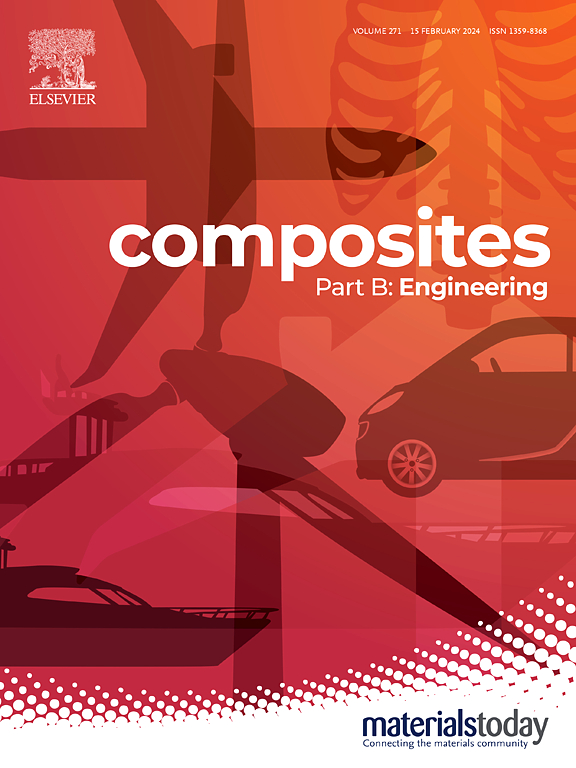A bio-inspired integrated composite stiffened panel for debonding prevention manufactured via AFP
IF 12.7
1区 材料科学
Q1 ENGINEERING, MULTIDISCIPLINARY
引用次数: 0
Abstract
Composite stiffened panels are a mass effective solution to provide structural stiffness and stability. Traditional designs are vulnerable to unstable debonding failure of the stiffeners from the skin, contributing to conservative certification requirements being necessary, which increases structural mass. In this work we propose a design, inspired by damage tolerant tree-branch attachments, to embed the stiffener to the skin to eliminate this premature failure mechanism. Automated fibre placement (AFP) is increasingly used in industry to manufacture composites, and in this work we develop a manufacturing route for composite stiffened panels, skin and stiffener, to be manufactured in a single AFP process. This is a desirable manufacturing route that additionally enables the realisation of damage tolerant designs such as that presented in this work. Three-point-bend testing reveals that whilst a traditional design suffers premature unstable stiffener debonding failure, the bio-inspired design prevents this failure mechanism. Our results show that this unlocks a 78% increase in peak load, and drastic improvements to failure stability and energy absorption capabilities. This work demonstrates that embedding of the stiffener into the skin can address the problematic failure of unstable stiffener debonding, and can be achieved with an industrially relevant manufacturing route.

求助全文
约1分钟内获得全文
求助全文
来源期刊

Composites Part B: Engineering
工程技术-材料科学:复合
CiteScore
24.40
自引率
11.50%
发文量
784
审稿时长
21 days
期刊介绍:
Composites Part B: Engineering is a journal that publishes impactful research of high quality on composite materials. This research is supported by fundamental mechanics and materials science and engineering approaches. The targeted research can cover a wide range of length scales, ranging from nano to micro and meso, and even to the full product and structure level. The journal specifically focuses on engineering applications that involve high performance composites. These applications can range from low volume and high cost to high volume and low cost composite development.
The main goal of the journal is to provide a platform for the prompt publication of original and high quality research. The emphasis is on design, development, modeling, validation, and manufacturing of engineering details and concepts. The journal welcomes both basic research papers and proposals for review articles. Authors are encouraged to address challenges across various application areas. These areas include, but are not limited to, aerospace, automotive, and other surface transportation. The journal also covers energy-related applications, with a focus on renewable energy. Other application areas include infrastructure, off-shore and maritime projects, health care technology, and recreational products.
 求助内容:
求助内容: 应助结果提醒方式:
应助结果提醒方式:


